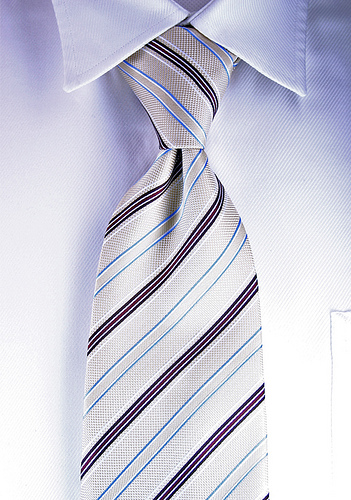
When I was first hired at my school back 16 years ago, I was told that there was a teacher dress code, which kind of suprised me, since at my previous school there wasn’t.
Male teachers were to wear shirts and ties along with dress slacks or casual pants. Wearing jeans was frowned upon.
I was told that since this school was considered a “fundamental” school, there were certain standards of dress that were to be met by the staff.
Basically, our fundamental school was to be a second option for parents who wanted to send their students to another school other than the one designated as their home school.
The condition, however, was that this school was going to have more rigorous requirements, a strict dress code and higher expectations.
After 16 years, however, many of the higher standards have fallen to the wayside. Although we still require that students adhere to the strict dress code (shirts being tucked in, hair being a natural color, etc. ) the dress code for the teachers is no longer enforced. The reason is because the union will not support the school’s position on the teacher dress code. As in everything, politics play a big role in school administration.
I still come to school wearing my shirt and tie, however, not because I want to follow the school’s dress code rule, but because of the message that it sends to the students.
I remember when I first began my career over 20 years ago, I worked in a school located in the bad part of town. Many of my students were part of families where drugs and gangs were part of normal life. Although there were no guidelines for how a teacher was to dress, I always came in a shirt and tie. Many of my fellow teachers would come in t-shirts and flip flops, looking like they just fell out of bed. I couldn’t do that.
Here’s the way I saw it: For many of my students, especially my Hispanic students, the only Hispanic adults they knew were their gang member relatives. Their image of an Hispanic adult was a negative one. This was what they had to look forward to.
I knew that if I could offer them a different image of an Hispanic, a positive one, then maybe they’ll think twice about accepting their gang member future.
I would tell my students back then, “My Dad worked in a warehouse and came home sweaty and dirty and tired every day. I wanted something different. I wanted to work in a place where I had air conditioning and people respected my opinion, and where I could wear a tie, because people who wore ties were important.”
I would tell them that’s why I got my education, so I wouldn’t have to work as hard as my Dad did. So I wore a tie everyday.
Twenty years later, although the union says that I don’t have to wear a tie, I still do.
I’m still sending my message to my students, even though I don’t have to.
I would encourage any new teacher to take note of how you’re dressing for work. What message are you sending to your students? Some may complain that it’s uncomfortable to spend all day dressed up. Well, you know if you’ve read enough of my posts, teacher comfort is not one of my priorities. We need to do what’s best for the kids, even if it means sacrificing a little of our comfort.
What do you think? Is how we dress for work significant? Does it matter? Do kids really care? Should there be a teacher dress code? How would you define professional dress? I’d like to hear from you.
By the way, I wrote a little poem about how I felt, and I sent it to all the members of the staff. I’ve had some positive replies and a few not-so-positive glances from some of the male teachers. Here it is:
Ties
By Sam Rangel
My mind fondly returns, when I close my eyes,
To a time when the men at this school all wore ties
When visitors arrived to easily recognize
The pride that our neckwear did symbolize
But alas, as this writer mournfully sighs
There are too many men who no longer wear ties
Have our necks grown too large? Do we need exercise?
Do we need to cut back on the burgers and fries?
Other than that, all that I can surmise
Is that we’ve forgotten the message we send with our ties.
A message that words just cannot verbalize
One that each unbuttoned collar denies
That a man with a tie is successful and wise
Have we come to the end? Should we say our good-byes
To that commitment to excellence with no compromise?
Can lower test scores come as any surprise
When the men at this school no longer wear ties?
I plead with the fates, my face turned toward the skies
Oh how the role model inside of me cries
I wish all the men would just realize
The effect on this school if we all wore our ties?
Is it so hard to conceptualize?
Should I just wear a t-shirt and faded Levis,
And thereby contribute to this school’s demise?
No, I will not become one of those guys
Who choose chest hair exposure over wearing their ties
And though I become one who my colleagues despise
The teacher who they choose to all ostracize
I here declare; on my soap box I rise
I will not abandon wearing my ties.
So as I come to a close, my rant I finalize
I speak to those men to whom this applies
Make that decision at the morning’s sunrise
To suck it up, and put on your ties.
Except on Fridays when you can wear a spirit shirt or something casual, but not too casual.
Thanks,
Sam





Thank you, thank you, thank you! I love this post! I am one that wears a tie as well. I’ve had teachers come to me and ask why I don’t have problems with students like they do. I just look at them and ask about what they are wearing. Teachers are professionals. . . . .DRESS THE PART! Thanks for the post!
Great comment Anthony. I totally agree that how you present yourself has an effect on your classroom management. Thanks!
Thanks also for mentioning SITC on your blog.
Sam
If you need a tie to get respect, you need to find a new profession. I have worn jeans and Hawiian shirts my entire teaching career, and I have never had a problem with respect in my classroom. I won’t tell you how to dress in your classroom. Please, don’t force your conservative values on me by telling me how to dress in mine. If dress mattered, when you dressed down, your class would go crazy. The teachers that Anthony referred to could dress in tuxedos and they’d still have problems in their classrooms.
Kind of harsh Mark, but I respect your opinion.
I don’t think I would be less respected without a tie, because you earn respect by your actions in class, but I think when you serve as a role model for students, I think dressing for success send a good message.
Thanks for the comment.
Sam
Sam, I apologize for my harshness. Where I’m at the uptight conservatves are trying to force this issue. Wasn’t America great when you could serve as a conservative role model in your classroom, and I could serve as a liberal role model in my classroom? That’s the America that the conservatives are trying to kill by forcing all the teachers to be the same role model. Dress does not make a better teacher. You’ve taken the real issue and ignored it because it does not fit your argument. Show me kids learn better from your tie than my Hawiian shirt, and I’ll doff it and don a tie tomorrow. Respect is unquantifyable and therefore indefensible. Your experience shows ties garner respect, mine shows it doesn’t matter. Who’s correct? We both are: you for your classroom and me for mine. I just don’t have to write blog posts to try and convince the rest of the world of my opinion. Maybe I should. Thanks for respecting my opinion, and, again, sorry if I offended. Mark
No offense taken Mark, and I definitely don’t want to make this a liberal – conservative political debate.
I see your point, and hope you see mine.
My goal was mainly to create a dialogue. I think there are a lot of teachers who come to school like they just rolled out of bed, and that’s bad for the students, the school, and the profession.
But, again, that’s my opinion, and there will be those who disagree, and they have a right to do so.
Thanks again Mark.
And yes, you should start a blog. : )
I got a question for you. What do you think of the principals or school districts that want to force every male teacher to wear a tie?
I’m against it.
Unless it’s a private school, I’m pretty sure that it’s against the first amendment, and the union won’t allow such a rule.
It has to be a personal decision by the teacher.
I think dressing professionally should be encouraged by the administration, but it can’t be forced.
Thanks for a great post and I agree with you, Sam. As a superintendent, I struggle with the dress issue. The question I would ask Mark, and anyone else who believes in their right to dress down, is “How would you dress for an interview for a job?” Most people recognize the importance of making a good impression. The follow up question is, “So after you get the job, why don’t you need to impress me any more?” One of my colleagues put it best when he said, “You dress up for special occasions and teaching children is a special occasion.”
What a great quote Bob. I’m in a new position this year as administrator, and dressing professionally has an even greater effect now, especially now that I’m meeting parents a lot more. Thanks for the comment!
Sam
Mark,
I think what Sam was saying is that he dresses the part to as a message to his male Hispanic students. As a Black female (prospective) teacher, I plan to dress the part and give my Black female students something to aspire to as well.
As a side note, a friend of mine relayed a story to me: The school where she taught had “Dress for Success Mondays” where the students dressed up. Teaching is in very many ways walking the walking as much as it is talking the talk. (FYI, she was also placed at a south side/ urban school)
As a teacher, your professional disposition should be that the needs of your students come first, and that your own agenda shouldn’t overly flavor your instruction (I hope it doesn’t).
If casual wear works with your students, kudos. You have not mentioned the SES of your students and the neighborhood in which you teach, or the level of your students, which plays a big part as well.
Sorry to be so long winded. Thanks for the inspiring post, Sam!
Thank you for the comment BrightEyed. You’re right. How you dress as a teacher should be influenced by the neighborhood and your commitment to do what’s best for kids. Thanks again, Sam.